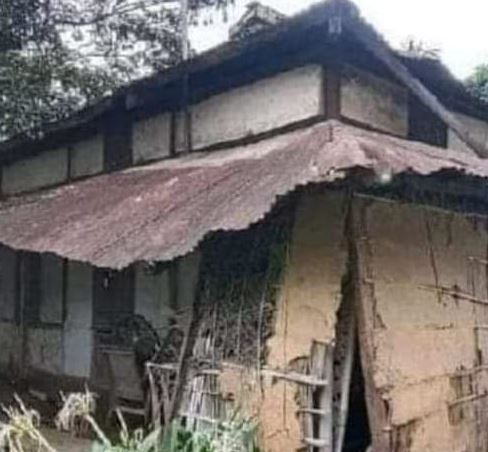Assam celebrated 121st birth anniversary of Rupknower Jyoti Prasad Agarwalla as Jyoti Divas on the day of 17th June and three days later observed Rabha Divas on the 20th June on occasion of 55th death anniversary of Bishnu Prasad Rabha. Irrespective of caste, creed and religion, every Assamese feel proud of remembering Bishnu-Jyoti either on the day of either on 17t or 20th June, as a mark of their both birth anniversary as well as death anniversary.
During Assam movement, student outfit, All Assam Student Union (AASU) capitalized celebration of “Jyoti as well as Rabha Divas”, in order to incite the people, so that they can embroil community emotion vigorously, so that they can challenge the state resistance. Patriotic Jyoti-Sangeet was the clarion call to ignite the Assamese spirit and sentiment”, just at the beginning and end of AASU meeting across the state during tenure of six years long Assam Movement.
Finally Assam Accord was signed on 15th August 1985, at the cost of 855 lives. Signing of accord had given a free license to firebrand AASU leaders of that time, to make a walk in to the power corridor of Dispur, and subsequently, sitting on minstrel berth as AGP minister those ASSU leaders unveiled their tyrannical face and made the myth of historic Assam Movement a big fallacy. This is how patriotic spirit in the songs of Jyoti Prasad Agarwalla and Bishnu Prasad Rabha, were just used to ignite public sentiment, to form a so called Jatiyotabadi ministry at Dispur. Rest story is an unpardonable history.
The backdrop for incredible creation of Jyoti Prasad Agarwalla and Bishnu Prasad Rabha was to inspire people for mass participation in the India’s freedom movement, to drive British regime out from India. AASU leadership tried to instigate Assamese people for the mass participation of in the Assam agitation but it was tuned as background music for AASU leaders to perform best melodrama to deceit people showing false dream of “Hunor Asom” (Assam made of Gold), not even Golden Assam.
The authoritarian AGP regime was very despotic in nature, did nothing, to mark their gratefulness, to these two iconic legends of Assam. The patriotic theme, of Jyoti Sangeet – Rabha Sangeet (Bishnu Rabha Sangeet), became an “old wives tale”, for them, once which was exploited as popular nursery rhyme for make their way to Dispur.
Middle class Assamese, living in seventh heaven on earth became revolutionary while the whole state celebrates “Rabha Divas or Jyoti Divas”, turn out as an ardent country lover just for a single for day.
In subsequent days, several Assamese jatiyotabadi organizations, followed the footsteps of AASU, carrying the tradition of observing “Rabha Divas or Jyoti Divas”, and their political ambition and social commitment is best known to them.
Forefather of Jyoti Prasad Agarwalla, born at Tamulbari Tea Estate at Dibrugarh, in Upper Assam, who was the modern architect of Assamese culture, was belong to Marwar community of Rajasthan, was the pioneer, first film maker of first Assamese Film Joymoti , portraying political instability of 17th Century Assam.
It can be recalled that in order to shoot film Joymoti, enthusiastic Jyotiprasad Agarwalla converted his Bholaguri Teagarden Factory into a film studio and under the banner of “Chitralekha Movie tone” the first Assamese film was released on 10th March 1935.
In the year 1939, Jyoti Prasad Agarwalla released the second Assamese Film “Indramalati”, amidst extreme financial crisis and debt, it had all happened because of surplus expenditure at his first creation of Joymoti.
For several decade people of Assam celebrating “Jyoti Divas”, across the state, which is overenthusiastically celebrated by the Jatiyosangathan, but neither government nor those outfits, ever bothered to recover the prints of Joymoti or trace its whereabouts.
Leave aside the preservation of these precious print, even nobody is aware about the existence. Same happened to the fate of the reels of Indramalati, none has record of its last existence.
Bishnu Prasad Rabha, doyen of modern Assamese Culture, a man having of extra ordinary brilliance of artistic paradigm was a communist revolutionist, carried “pen in one hand and sten-gun on other hand fought for his dream of “classless society with equitable social, political and economic rights”.
Son of a Subedar of “Gorkha Regiment” and subsequently of “Assam Rifle”, Gopal Chandra Mushahary (Rabha) who became an “ADC to the Governor of Bengal” , Bishnu Rabha was born at Rongpur city of present Bangladesh, had never completed his education, however he studied in Government High School at Tezpur, and later phases at Military School at Dhaka. Finally Bishnu Rabha complete his I.S.C. examination from St. Paul’s Cathedral Mission College” and joined the Ripon College [now known as Surendranath College, named after educationist, founder member of Indian National Association and Indian National Congress Surendranath Banerjee (1848-1925)] under Calcutta University for B.Sc. degree. Even for few days he had also studied in Karmail Academic in Rongpur and Victoria College in Cooch Behar.
Bishnu Prasad Rabha, who hails from Jamidary (Feudal Land Lord) family ground, surprisingly, donated 2500 bighas of ancestral land to several landless farmers, but as on day today, the much revered ancestral house of Bishu Prasad Rabha, at Tezpur is almost ruined and someday or other, about to be flatten on ground.
Few of people floats controversial narratives suspecting whether Bishnu Prasad Rabha really had spent his days in that “old ikora walled tin roofed house” during his stay at Tezpur ?
Decades ago, I personally went to that house, after sitting over a cup of tea, recalling reminiscence of her past, wife of Kolaguru, late Mohini Rabha, at her very old age shared her mind with me remembering her companion with husband Bishnu Prasad Rabha in that house.
It can be recalled that, for construction of this house, Raibahadur Gopal Chandra Mushahary (Rabha) father of Bishnu Prasad Rabha, brought the building materials like roof sheet, iron post and other materials from Dhaka, the capital of present Bangladesh, through river port at Tezpur.
Several jatiyotabadi organizations, public platform including government machinery, spearheaded observing Rabha Divas, across the state, spending lots of money, on its contrary, the house where “non conformist revolutionary” Kolaguru Bishnu Prasad Rabha stuck around during golden days of his life is now under serious threat of decay and demolition. No repairing is done for several years.
This poor house of Bishu Prasad Rabha, is the best example to understand the real love and respect of politicized jatiyotabadi sentiments of Assamese people, who sell and use the name of Bishu Prasad Rabha for gaining their pity political milage.
Assam yet observe “Rabha Divas”, however, people’s true love for him is really under suspicion, as today’s “ruined mark on ikora wall of his house”, speaks many harsh reality of his life, as “Bishnu Rabha” was just used for exploiting in political vendetta. It can be recalled that because of his revolutionary zeal Bishnu Rabha was arrested in1952 at Ghilguri Village in Goalpara district, similarly in the year 1962, Bishnu Rabha was again arrested during Chinese aggression in 1962, from Palashbari area in South Kamrup suspecting his as communist negotiator. After this arrest; just to feel him humiliated, both his legs were clubbed with iron chain and dragged with rope tied hand on the street of Tezpur, then he was imprisoned at Behrampur Jail in Orissa without any specific charges.
As soon as Kolaguru Rabha locked inside the prison, opportunist middle class Assamese nakedly started maintaining social and personal distance with him stamping him as “communist agent” on his back.
Rupknower Jyoti Prasad Agarwalla and Kolaguru Bishnu Prasad Rabha in fact were really made for each other in every aspect of their life. In fact both Rupknower and Kolaguru were hand in hand throughout their journey in the distant political and cultural world of Assam and north east. Rupknower Jyoti Prasad Agarwalla and Kolaguru Bishnu Prasad Rabha both designed, however, Kalaguru Rabha for the first time introduced and demonstrated “Tandava Nritya” at the open stage of Amulapatty Natya Mandir (DAP) in Dibrugarh.
However, with all best contribution of Rupknower Jyoti Prasad Agarwalla and Kolaguru Bishnu Prasad Rabha, it is very sad to connect that, nobody in Assam has time to either to find the faded and lost film reels of first and second Assamese Film “Joymoti and Indramalati” nor to preserve the historic prestigious Assam Type house of Tezpur, which was epicenter for new patriotic trend of modern Assamese songs, art, culture, drama, literature and what not.


